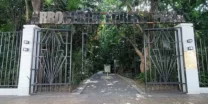TWO months prior to the celebration of World Water Day, the United Nations said more actions and measures are needed to ensure all people can access safe water and sanitation by 2030.
The Philippines is among the nations that need to step up efforts to achieve this goal.
One of the 17 Sustainable Development Goals (SDGs) of the UN is clean water and sanitation.
Unsafe drinking water and lack of sanitation can cause diseases which can lead to poor health and even death, as well as impede a country’s development.
SDG 6 indicators
Goal 6 of the Sustainable Development Goals seeks to ensure the availability and the sustainable management of water and sanitation for all.
It also aims to ensure the quality and sustainability of water resources, which are essential to human and environmental existence.
The 2030 Agenda acknowledges the importance of water resources to sustainable development and the critical role that better drinking water, sanitation, and hygiene play in other sectors such as health, education, and poverty reduction, said the UN.
UN Report
According to a joint report from the World Health Organization and the UN Water that analyzed sanitation and drinking water, the Philippines is among the 32 out of 73 countries with “acceleration needed” status.
This means these countries are lagging behind their SDG 6 goals and would need to double their actions to achieve their safe drinking water, sanitation, and hygiene targets by 2030.
The report also noted that countries with “acceleration needed” status are much more likely to report that they did not implement SDG 6 functions such as collecting data, publishing reports, and taking corrective actions to improve performance and address national standards concerning drinking water and sanitation targets.
Countries with “Acceleration needed” status
The following countries tagged by the UN with “Acceleration needed” status in safe drinking water targets are the following:
- Bangladesh
- Burkina Faso
- Cabo Verde
- Cameroon
- Chad
- Dominican Republic
- Gabon
- Guatemala
- Haiti
- Indonesia
- Lebanon
- Lesotho
- Liberia
- Madagascar
- Maldives
- Mauritania
- Nepal
- Nicaragua
- Niger
- Nigeria
- Pakistan
- Papua New Guinea
- Paraguay
- Philippines
- Sierra Leone
- Sudan
- Tajikistan
- Togo
- United
- Republic of Tanzania
- Uzbekistan
- Zambia
- Zimbabwe
The report likewise said the Philippines is among the 40 countries in the world with “acceleration needed” status in terms of reaching its sanitation targets.
The following countries tagged by the UN with “acceleration needed” status in sanitation targets are the following:
- Albania
- Bangladesh
- Belarus
- Bhutan
- Bosnia and Herzegovina
- Botswana
- Burkina Faso
- Burundi
- Chad
- Côte d’Ivoire
- Cuba
- Ethiopia
- Georgia
- Ghana
- Guatemala
- Guinea
- Jordan
- Lebanon
- Liberia
- Madagascar
- Malawi
- Maldives
- Mauritania
- Mauritius
- Niger
- Nigeria
- Pakistan
- Papua New Guinea
- Peru
- Philippines
- Sao Tome and Principe
- Sierra Leone
- Sudan
- Syrian Arab Republic
- Tajikistan
- Togo
- United Republic of Tanzania
- Uruguay
- Zambia
- Zimbabwe
According to the UN, only 25 percent of nations are on track to meet their national sanitation goals, while 46 percent of countries are on track to meet their nationally set drinking-water coverage goals. However, less than one-third of countries worldwide claimed to have the necessary personnel to perform critical drinking water, sanitation, and hygiene (WASH) tasks.
Lack of assistance
One angle that the UN and WHO saw in the assessment is that assistance for water supply and sanitation is decreasing in these areas of concern.
According to the report, the aid for water and sanitation plummeted by 5.6 percent between 2017 and 2020. The geographical targeting of the aid had also shifted, it said.
“While a majority of countries have measures in WASH policies and plans to reach vulnerable populations and settings, these measures are not supported with monitoring or financial resources,” it said.
Unsafe access to clean water
In 2019, the WHO revealed that one out of 10 Filipinos still does not have access to improved water sources. As a result, the report said over 139,000 people died from acute watery diarrhea in the Philippines in 2016, making it one of the top 10 leading causes of mortality.
Banner Photo Credit: Judgefloro, CC0, via Wikimedia Commons








